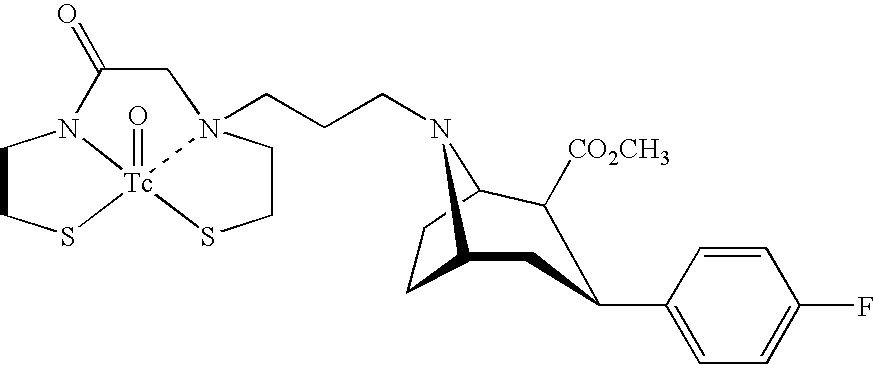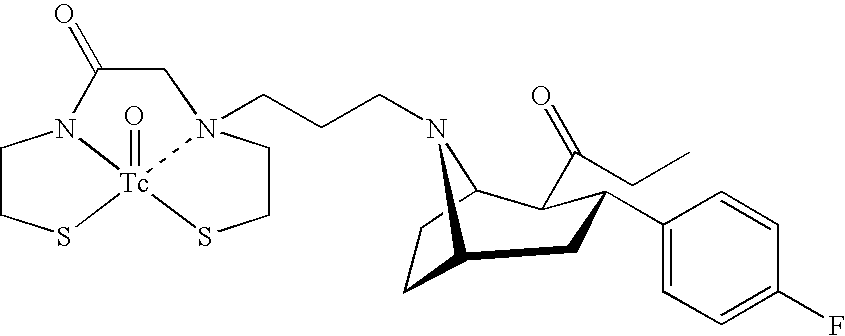Method of differentially diagnosing different types of dementia
a technology differential diagnosis, applied in the field of differential diagnosis of different types of dementia, can solve the problems of only being able to precisely differentiate alzheimer's disease, affecting the treatment effect, so as to achieve precise differentiation of alzheimer's disease and frontotemporal dementia, and patients suffering from lewy-body dementia are susceptible to neuroleptic agents
- Summary
- Abstract
- Description
- Claims
- Application Information
AI Technical Summary
Benefits of technology
Problems solved by technology
Method used
Image
Examples
Embodiment Construction
[0033]The inventor has surprisingly discovered that SPECT tracers can be used for differentially diagnosing degenerative dementias such as Alzheimer's disease, Lewy-Body Dementia, and Frontotemporal Dementia in a single SPECT run. The invention is based on the finding that SPECT tracer distribution as measurable by perfusion analysis shortly after administration of the tracer and the SPECT tracer's localization as measurable after a longer period can be used to differentially diagnose the aforementioned degenerative dementia.
[0034]Before some of the embodiments of the present invention are described in more detail, th following definitions are introduced.
[0035]As used in the specification and in the claims, the singular forms of “a” and “an” also include the respective plurals unless the context clearly dictates otherwise.
[0036]The terms “about” and “approximately” in the context of the present invention generally denote a level or interval accuracy that a person skilled in the art ...
PUM
| Property | Measurement | Unit |
|---|---|---|
| time | aaaaa | aaaaa |
| Single Photon Emission Computer Tomography | aaaaa | aaaaa |
| time | aaaaa | aaaaa |
Abstract
Description
Claims
Application Information
 Login to View More
Login to View More - R&D
- Intellectual Property
- Life Sciences
- Materials
- Tech Scout
- Unparalleled Data Quality
- Higher Quality Content
- 60% Fewer Hallucinations
Browse by: Latest US Patents, China's latest patents, Technical Efficacy Thesaurus, Application Domain, Technology Topic, Popular Technical Reports.
© 2025 PatSnap. All rights reserved.Legal|Privacy policy|Modern Slavery Act Transparency Statement|Sitemap|About US| Contact US: help@patsnap.com



